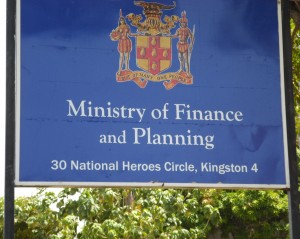Inflation levels declined sharply from what was reported in May due mainly to a decline of 2.5 per cent in the index for the division ‘Housing, Water, ‘Electricity, Gas and Other fuels’. This was mostly due to a reduction in prices for ‘Electricity, Gas and Other Fuels’ and for ‘Water Supply and Miscellaneous Services related to Dwelling’.
Statin, the government’s body for collection and collating the data, reported that the All Jamaica ‘All Divisions’ Consumer Price Index for June 2013 recorded a mere 0.2 per cent rate of inflation, 0.3 percentage points below the 0.5 per cent rate recorded for May 2013. ‘Food and Non-Alcoholic Beverages’, the heaviest weighted division in the computation of the Index, recorded a 0.7 per cent rate of increase, resulting mainly from increased prices for ‘Fruits’ which was moderated by the declines mentioned above.
The other divisions that recorded increases were ‘Alcoholic Beverages and Tobacco’ 0.7 per cent, ‘Clothing and Footwear’ 0.4 per cent, ‘Furnishings Household Equipment and Routine Household Maintenance’ 0.5 per cent, ‘Health’ 2.0 per cent, ‘Transport’ 0.2 per cent ‘Recreation and Culture’ 0.4 per cent, ‘Restaurants and Accommodation Services’ 0.3 per cent, and ‘Miscellaneous Goods and Services’ 0.7 per cent. There was no movement recorded for ‘Education and ‘Communication’.
The mean All Jamaica CPI for the second quarter in 2013 moved upward by 2.0 per cent in comparison to the 2.5 per cent for the first quarter. The calendar year–to-date inflation rate was 3.9 percent.
The Greater Kingston Metropolitan Area (GKMA) and Rural areas recorded increases of 0.3 per cent and 0.1 per cent respectively, while the inflation rate for Other Urban Centres (OUC) was relatively unchanged.

 In cedi terms, the
In cedi terms, the 








